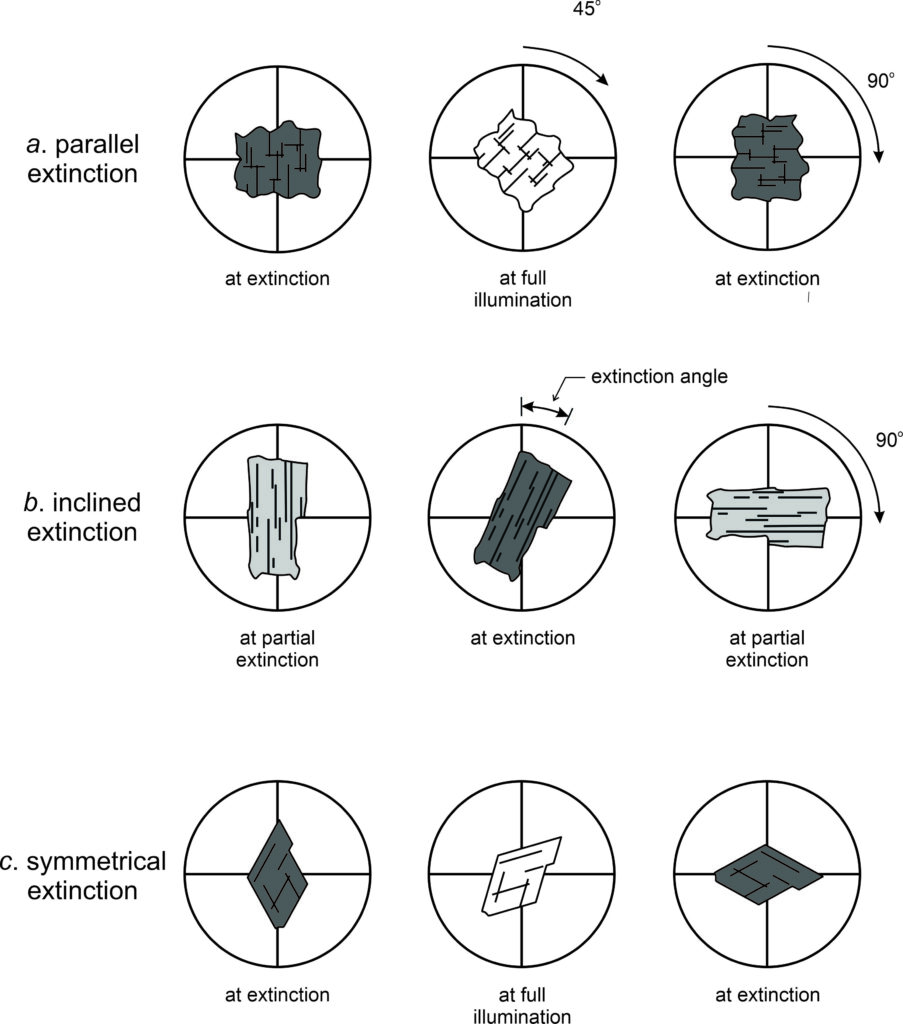5.5.1: Extinction Angles
- Page ID
- 19128
Viewed with crossed polars, anisotropic grains go extinct every 90o as we rotate the microscope stage. We can measure the extinction angle, the angle between a principal cleavage or direction of elongation (if the grain has a long dimension) and extinction by rotating the stage and using the angular scale around the stage perimeter.

Some hexagonal, tetragonal, and orthorhombic minerals exhibit parallel extinction; they go extinct when their cleavages or directions of elongation are parallel to the upper or lower polarizer (Figure 5.62a). Many monoclinic and all triclinic crystals exhibit inclined extinction (Figure 5.62b) and go extinct when their cleavages or directions of elongation are at angles to the upper and lower polarizer. Some minerals exhibit symmetrical extinction; they go extinct at angles symmetrical with respect to cleavages or crystal faces (Figure 5.62c). These different kinds of extinction result from different kinds of atomic arrangements and so are diagnostic for mineral identification.
For any given mineral, the extinction angle seen in thin section depends on grain orientation. (This is because the apparent angle at which planes intersect depends on the direction of viewing.) But there is always some maximum value for any mineral. To determine this maximum value requires measurements on multiple grains, or on one grain in the correct orientation (determined by looking at interference figures, discussed later). If the grains are randomly oriented in a thin section and if the sample size is large enough, determining the maximum value is straightforward although, perhaps, a bit tedious.


